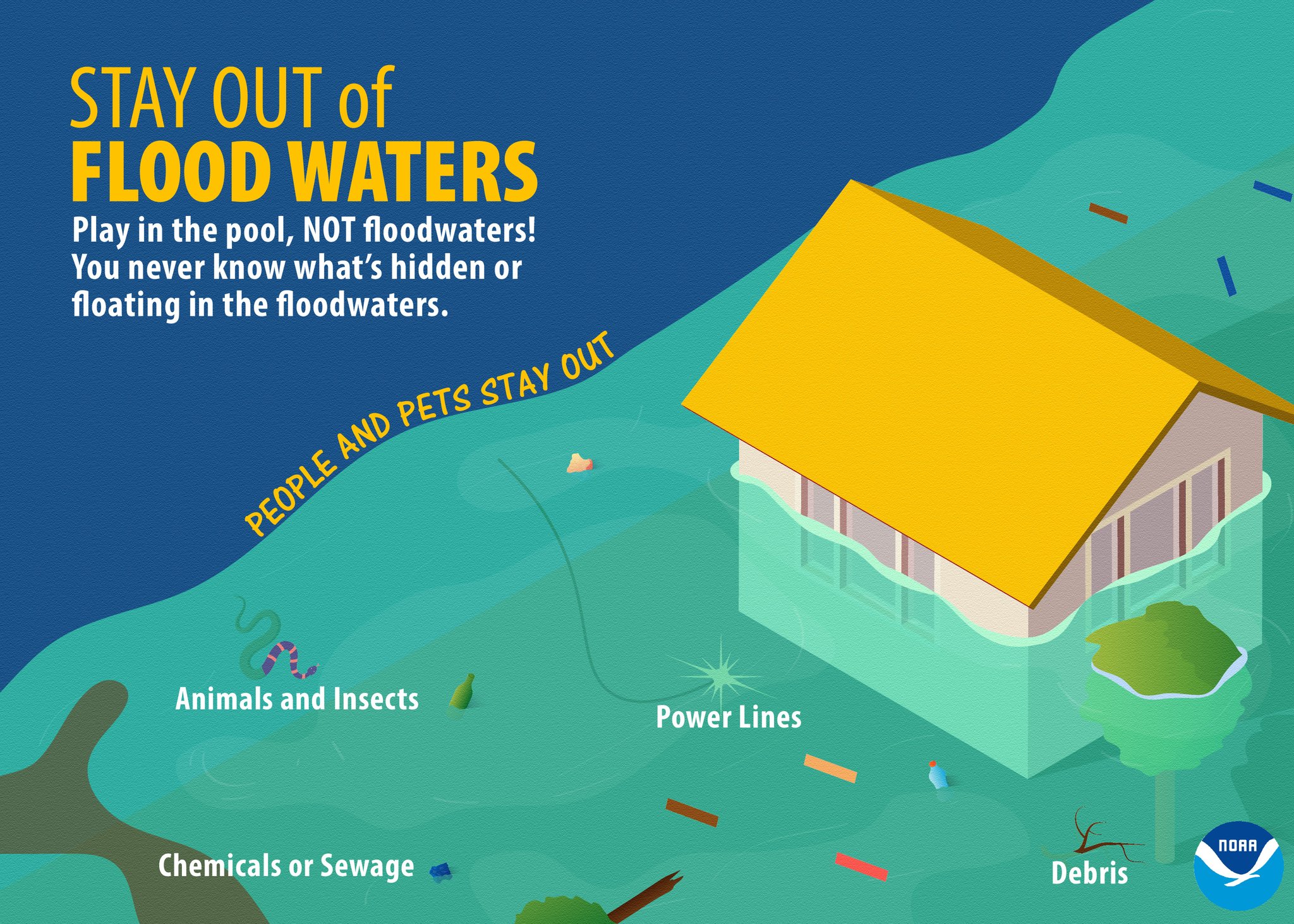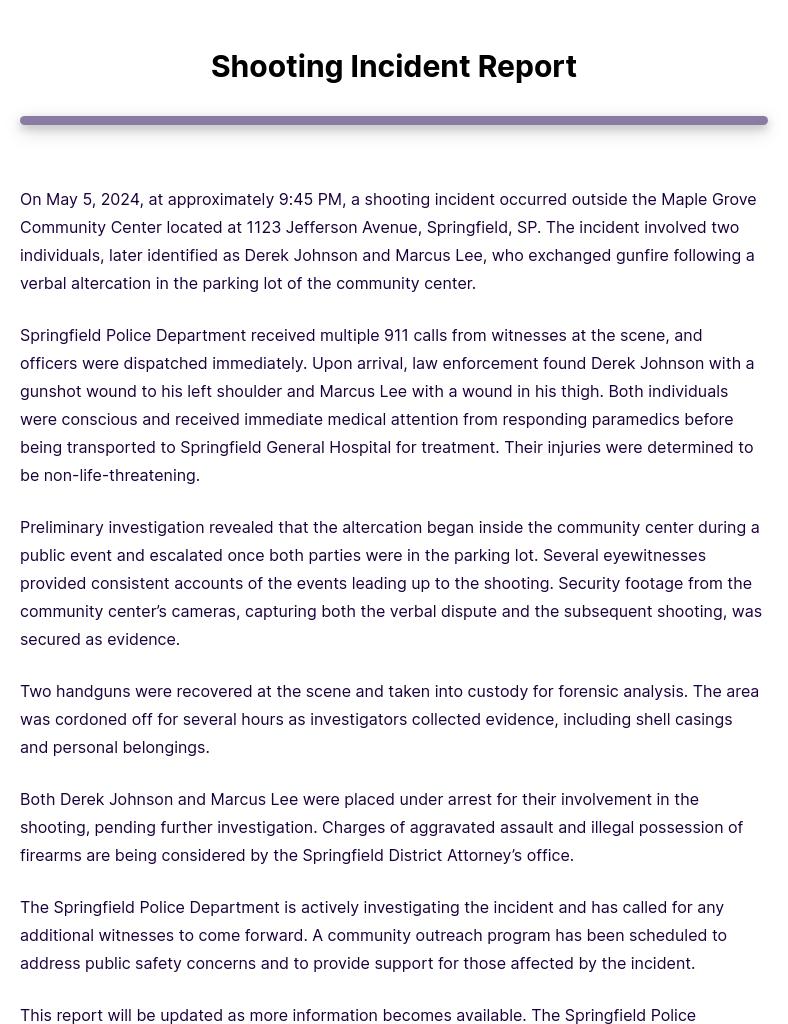Stay Safe During Floods: Your Guide To Severe Weather Awareness Week Day 5

Table of Contents
Before the Flood: Proactive Flood Safety Measures
Proactive flood safety measures are crucial for minimizing the impact of a flood. Taking steps before a flood strikes can save lives and property. Here’s how to prepare:
Create a Family Emergency Plan
A well-defined family emergency plan is your first line of defense against flooding. This plan should include:
- Designated Meeting Points: Establish several meeting points – one near your home, one further away, and one outside your neighborhood – in case you become separated during the evacuation.
- Communication Strategies: Determine how family members will communicate during and after a flood. This could include pre-arranged check-in times, text messages, or a designated contact person.
- Evacuation Routes and Shelters: Identify multiple escape routes from your home and familiarize yourself with the location of nearby shelters. Knowing alternate routes is essential if your primary route is blocked.
- Emergency Kit: Prepare a waterproof emergency kit containing essential supplies such as water (one gallon per person per day for at least three days), non-perishable food, a first-aid kit, medications, flashlights, batteries, a whistle, and copies of important documents.
- Flood Safety Drills: Practice your evacuation plan with your family regularly so everyone knows what to do in case of a flood warning.
Protect Your Property
Protecting your property from flood damage involves several proactive steps:
- Elevate Valuable Items: Move valuable possessions, electronics, and important documents to higher floors or shelves. Consider using waterproof containers for added protection.
- Flood Barriers and Sandbags: If you live in a high-risk flood zone, consider installing flood barriers or sandbags around your property to help divert floodwaters.
- Improve Water Drainage: Regularly clean gutters and downspouts to ensure efficient water drainage away from your home. This prevents water from accumulating around your foundation.
- Flood Insurance: Check with your insurance provider about flood insurance coverage. Standard homeowner's insurance typically doesn't cover flood damage.
- Understand Your Flood Risk: Research your property's flood risk. Your local government or FEMA (Federal Emergency Management Agency) can provide information on floodplains and flood risk zones.
Stay Informed
Staying informed is crucial for effective flood safety.
- Weather Alerts and Notifications: Sign up for weather alerts and emergency notifications from your local National Weather Service or emergency management agency.
- Monitor News and Weather Reports: Keep a close eye on local news and weather reports for any flood warnings, watches, or advisories. Understand the difference between a watch and a warning.
- Understand Flood Warnings and Watches: Familiarize yourself with the terminology used in flood warnings and watches. A watch means flooding is possible, while a warning means flooding is imminent or occurring.
- Community Evacuation Plan: Know your community's evacuation plan, designated routes, and shelter locations.
During the Flood: Immediate Actions for Flood Safety
When a flood occurs, swift and decisive action is critical.
Evacuate if Necessary
If you receive an evacuation order from emergency officials, evacuate immediately.
- Follow Official Instructions: Obey instructions from emergency personnel. They are best equipped to assess the situation and guide your actions.
- Never Drive or Walk Through Flooded Areas: Floodwaters can be deceptively deep and swift, hiding dangers like downed power lines, debris, and washed-out roads.
- Turn Off Utilities: Before leaving, turn off electricity, gas, and water to prevent further damage or hazards.
- Take Your Emergency Kit: Grab your pre-packed emergency kit and any essential medications.
If Evacuation is Not Possible
If evacuation isn't possible, take these steps to protect yourself:
- Move to Higher Ground: Move to the highest level of your home, preferably the upper floor.
- Stay Away from Windows and Doors: Avoid areas most susceptible to flooding and damage.
- Turn Off Electricity: Turn off all electrical appliances and power at the circuit breaker to avoid electric shock.
- Monitor Water Levels: Continuously monitor rising water levels.
- Call for Emergency Assistance: If you need help, call emergency services immediately.
After the Flood: Post-Flood Safety and Recovery
Post-flood safety is equally critical to ensure your well-being and start the recovery process.
Check for Injuries and Damage
After the floodwaters recede, prioritize safety:
- Assess Home Safety: Carefully inspect your home for structural damage before entering.
- Seek Medical Attention: Seek medical attention for any injuries sustained during the flood.
- Document Damage: Take photos and videos of the damage to your property for insurance claims.
Clean and Disinfect
Floodwaters contain contaminants and pose health risks:
- Discard Contaminated Items: Throw away any food or water that has come into contact with floodwater.
- Clean and Disinfect: Thoroughly clean and disinfect all affected areas using appropriate cleaning solutions.
- Beware of Hazards: Watch out for hazards like broken glass, sharp debris, and downed power lines.
- Avoid Floodwater Contact: Avoid contact with floodwater as it may contain harmful bacteria, chemicals, and sewage.
Contact Authorities and Insurance
Take these steps to initiate the recovery process:
- Report Damage: Report damage to your property to local authorities.
- Contact Your Insurance Company: File a claim with your insurance company as soon as possible.
- Seek Assistance: Seek assistance from relief organizations if needed.
Conclusion
Staying safe during floods requires preparation, awareness, and decisive action. By following these flood safety guidelines and developing a comprehensive emergency plan, you can significantly reduce the risks associated with flooding. Remember, understanding your risk, preparing your property and family, and taking prompt action during and after a flood event are crucial for your well-being. Don’t wait for a flood; prioritize flood safety today. Learn more about flood safety resources available in your area and ensure your family is prepared for the unexpected.

Featured Posts
-
 Yevrobachennya Peremozhtsi Ostannikh 10 Rokiv Ta Yikhni Dosyagnennya
May 25, 2025
Yevrobachennya Peremozhtsi Ostannikh 10 Rokiv Ta Yikhni Dosyagnennya
May 25, 2025 -
 Southern Vacation Hot Spot Rebuts Negative Safety Rating After Shooting Incident
May 25, 2025
Southern Vacation Hot Spot Rebuts Negative Safety Rating After Shooting Incident
May 25, 2025 -
 Brbs Banco Master Acquisition A Challenger Emerges In Brazils Financial Landscape
May 25, 2025
Brbs Banco Master Acquisition A Challenger Emerges In Brazils Financial Landscape
May 25, 2025 -
 Ferrari 296 Speciale Potencia Hibrida De 880 Cv Revelada
May 25, 2025
Ferrari 296 Speciale Potencia Hibrida De 880 Cv Revelada
May 25, 2025 -
 The Kyle And Teddi Dog Walker Incident What Really Happened
May 25, 2025
The Kyle And Teddi Dog Walker Incident What Really Happened
May 25, 2025
